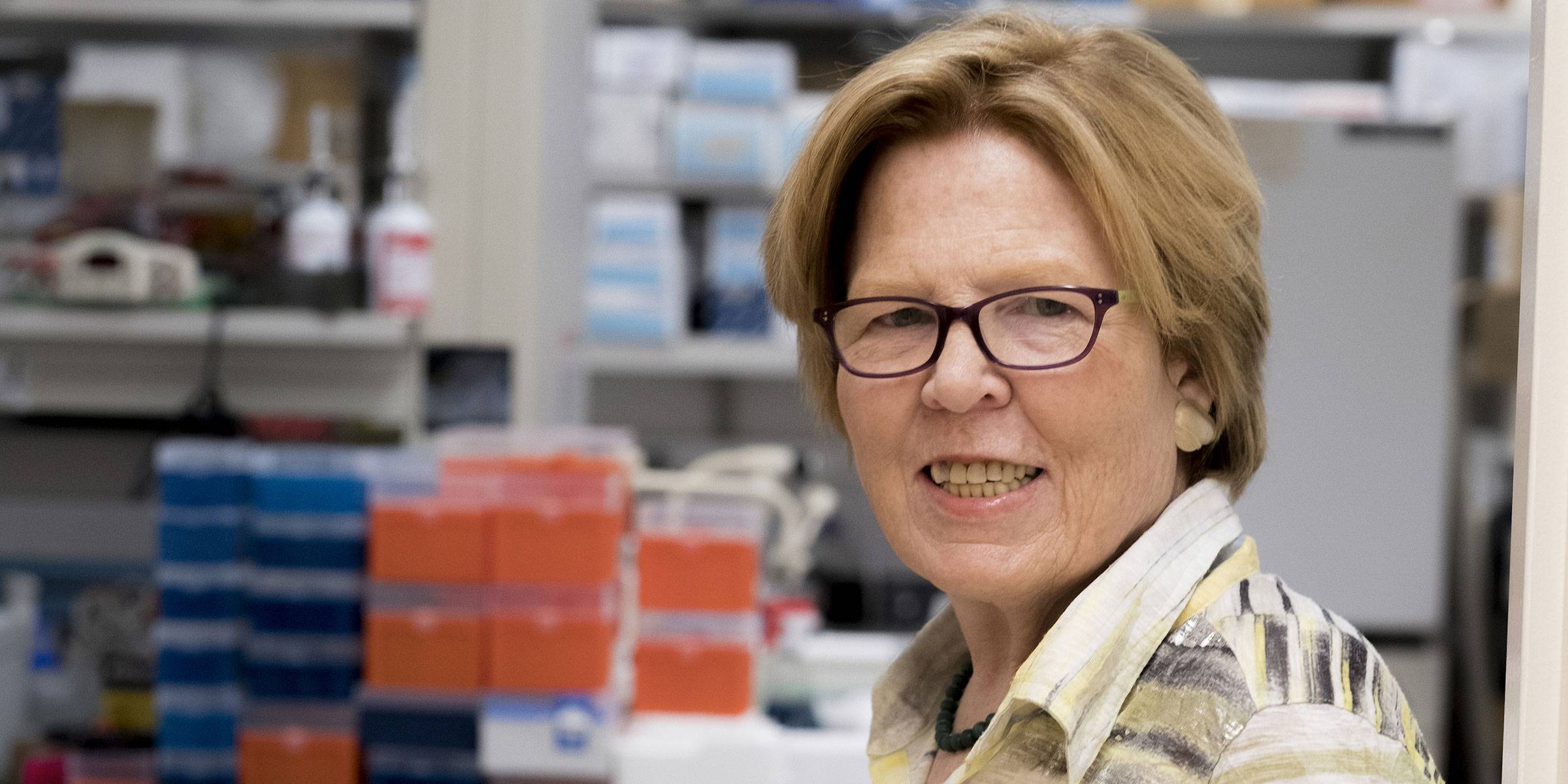Mary E. Hatten, Ph.D.
Frederick P. Rose Professor
Hatten studies the development of the complex cellular architecture of the mammalian brain. Her research on how neurons migrate and differentiate has implications for the genetics of brain disease, as well as conditions that are partially due to developmental abnormalities, such as autism spectrum disorders (ASDs), attention deficit disorder, and childhood epilepsy. Her work has also provided insights into medulloblastoma, a prevalent childhood metastatic brain tumor.
Using the mouse cerebellar cortex as a model, Hatten studies the mechanisms of cerebellar neurogenesis and migration during central nervous system (CNS) development. Her lab pioneered the development of video imaging methods to view the dynamics of CNS neuronal migration along glial fibers. Using these methods, Hatten has discovered the cellular and molecular mechanisms of glial-guided CNS migration.
To analyze global changes in gene expression in postmigratory neurons, Hatten has used a method called translating ribosome affinity purification (TRAP) to reveal dramatic changes in multiple chromatin remodeling reactomes of postmigratory neurons during the formation of cerebellar circuitry. Notably, the Tet genes and a DNA demethylation product, 5-hydroxymethylcytosine (5hmC), are upregulated. The activation of Tet enzymes elevated 5hmC levels in axon guidance and ion channel genes, and knockdown of Tet1 and Tet3 by RNA interference markedly inhibited circuit formation in the developing cerebellum by blocking dendritic arborization. Work is ongoing, in collaboration with the Allis Lab, to analyze how histone modifications, in particular histone methylation, regulate changes in transcription during CNS circuit formation. For these experiments, she is using both molecular and imaging approaches.
The Hatten lab discovered and studied the neuron-glial adhesion protein astrotactin (ASTN1), a receptor critical for glial-guided migration. The lab has also discovered Astn2, which has been identified as a risk factor in ASDs, attention deficit hyperactivity disorder, and other neurodevelopmental disorders. Recent experiments show that ASTN2 localizes to synapses, binds to the synaptic protein neuroligin, and functions in synaptic protein trafficking. New work shows that a mouse with a loss-of-function mutation in Astn2 is an important model for the role of the cerebellum in ASDs, because Purkinje neurons—the cerebellum’s primary output cell—in the Astn2 mutant have a decrease in evoked excitation relative to inhibition and a decrease in dendritic spines. The mutant also has ASD-like behaviors, including a decrease in ultrasonic vocalizations and deficits in open field tests.
To study neurons with Astn2 lesions from autism patients, as well as other neurogenetic defects that affect cerebellar development, Hatten has developed protocols to differentiate induced pluripotent stem cells (iPSCs) into cerebellar neurons. Importantly, she is currently using bio-engineering to develop 3D layered cultures to study circuit formation by human cerebellar neurons.
Hatten is a faculty member in the David Rockefeller Graduate Program, and the Tri-Institutional M.D.-Ph.D. Program.
